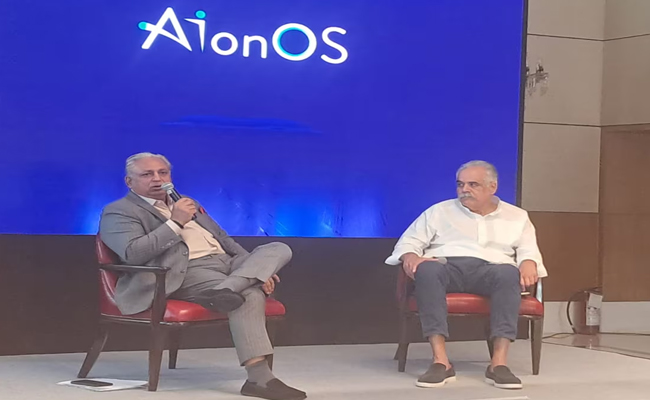Eset reports - India recorded the 6th highest Android threat detection globally
By MYBRANDBOOK

ESET Research has released its T3 2021 Threat report, it says on the most frequent external attack vectors, the reason behind the rise of email threats, and shifts in the prevalence of certain types of threats due to fluctuating exchange rates of cryptocurrencies. In the world of mobile, there are alarming Android banking malware detections, which rose by 428% in 2021 compared to 2020, reaching the detection levels of adware – a common nuisance on the Android platform. India recorded the 6th highest Android detection globally, and the highest in the Asia Pacific region (APAC). It also recorded a 6.9% increase in 2021 as compared to 2020. The growing number of Android threats in India highlights an alarming trend, particularly as over 95% of the 600 million smartphone users in India are Android users.
Additionally, about 75% of smartphone users in India did not install any mobile security solution, which meant that users could be susceptible to Android banking malware and other forms of mobile threats. To protect themselves against these threats, users should keep their Android devices updated and use reliable mobile security apps, the company reveals. The report highlighted that the most active botnet in T3 2021 was the Mozi, which in the last four months of 2021 amassed more than 162,000 unique IPs in India, 79,000 of which had already been compromised in the previous period.
India had the second highest number of enslaved devices globally with 29% of the unique IPs detected in India. Researchers also revealed that another vulnerability named ProxyLogon was the second most frequent external attack vector in ESET’s 2021 statistics, right after password-guessing attacks. Microsoft Exchange servers fell under siege again in August 2021, with ProxyLogon’s “younger sibling”, named ProxyShell, which has been exploited worldwide by several threat groups.
According to the report, the end of the year was also turbulent for Remote Desktop Protocol (RDP) attacks, which escalated throughout all of 2020 and 2021. The numbers from the last weeks of T3 2021 broke all previous records, amounting to a staggering yearly growth of 897% in total attack attempts blocked – despite the fact that 2021 was no longer marked by the chaos of newly imposed lockdowns and hasty transitions to remote work.
As the bitcoin exchange rate reached its highest point in November. Experts observed an influx of cryptocurrency-targeting threats, further boosted by the recent popularity of NFTs. Finally, the Email threats, the door to a myriad of attacks, saw their yearly detection numbers more than double. This trend was mainly driven by a rise in phishing emails, which more than compensated for the rapid decline in Emotet’s signature malicious macros in email attachments.


TAC Security becomes Cyber Security Assessor for the App Defen
The cybersecurity company, TAC Security has been selected as a key Cyber ...

InterGlobe’s Rahul Bhatia and C.P. Gurnani together announce
In a move that is set to transform the AI landscape, Rahul Bhatia, Group M...

Download masked Aadhaar to improve privacy
Download a masked Aadhaar from UIDAI to improve privacy. Select masking w...

Sterlite Technologies' Rs 145 crore claim against BSNL rejecte
An arbitrator has rejected broadband technology company Sterlite Technolog...


Technology Icons Of India 2023: Ashwini Vaishnaw
Ashwini Vaishnaw is an Indian politician and former IAS officer and is...

Technology Icons Of India 2023: Josh Foulger
Josh is the Country Head of India and MD of Bharat FIH Ltd (A Foxconn ...

Technology Icons Of India 2023: Kumar Mangalam Birla
Aditya Birla Group chairman Kumar Mangalam Birla’s return to Vodafon...


ECIL continues to keep India ahead in the growth of Information Technology and Electronics
ECIL played a very significant role in the training and growth of high...

TCIL continues to strengthen India with its technology expertise
TCIL undertakes consultancy & turnkey projects in the field of Telecom...

INDIANOIL helps reach precious petroleum fuels to every nook and corner of the country
IndianOil, a diversified, integrated energy major with presence in alm...


EXCLUSIVE NETWORKS SALES INDIA PVT. LTD.
Exclusive Networks is a globally trusted cybersecurity specialist hel...

BEETEL TELETECH LTD.
: Beetel is one of the oldest and most reputed brands in the Industry,...

SONATA INFORMATION TECHNOLOGY LIMITED
Sonata Software Limited is a leading Modernization engineering company...